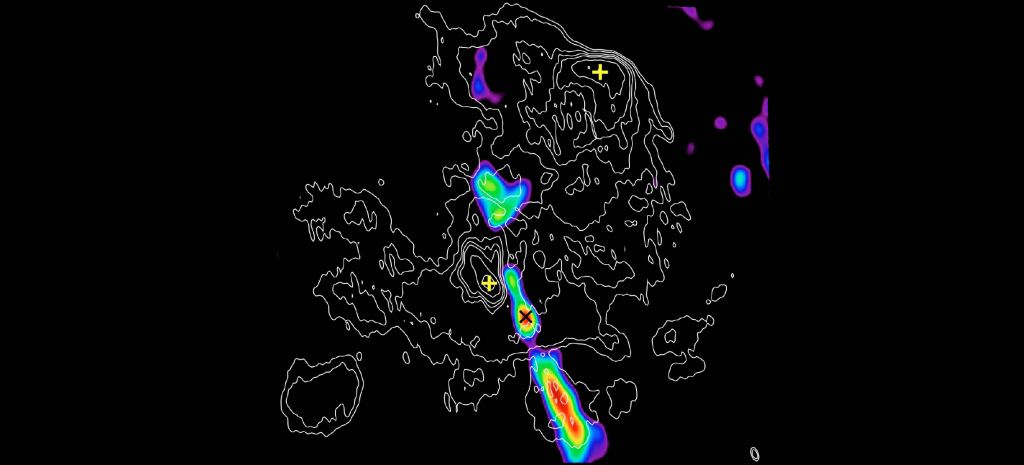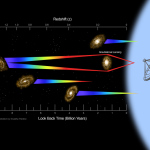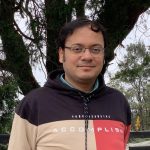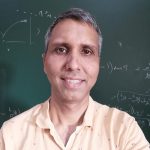Nirupam Roy’s lab observes the cosmos through radio telescopes

Nirupam Roy’s foray into the field of astrophysics happened by chance. During his BE days, he came across a tender notice from the Tata Institute of Fundamental Research (TIFR) in the local newspaper. He wrote a letter, addressing it to the head of the Department of Physics, hoping to get his physics-related questions answered. This letter ended up reaching Probir Roy, a high energy physicist in TIFR, who replied, and later encouraged Nirupam to apply for a PhD.
Nirupam went on to pursue a doctoral degree in astrophysics at the National Centre for Radio Astrophysics (NCRA-TIFR), where he met the late Govind Swarup, widely regarded as the “father of Indian radio astronomy”, from whom he learnt about the early days of astronomy research in the country. He then joined the National Radio Astronomy Observatory in New Mexico as a Jansky Fellow, and later the Max-Planck Institute for Radio Astronomy in Bonn, Germany for his postdoctoral studies.
During his time abroad, Nirupam would get periodic emails from Govind Swarup encouraging him to “come back to India after his fellowship” and “consider teaching”. “It was part of the reason I joined IISc,” he says. After he returned to India, he worked briefly at IIT Kharagpur, before joining as an assistant professor in the Department of Physics at IISc in 2016.
In IISc, his lab focuses on two fascinating aspects of stars: the interstellar medium and supernova remnants. Interstellar medium, as the name suggests, is the collection of low-density gases and dust that are present in the space between the stars. It plays an important role in the formation of new stars. In a recent study, a student at his lab looked at the temperature distribution of the gases in the interstellar medium. To his surprise, he found definitive evidence that interstellar turbulence is driving a large fraction of the gas to the temperature range that was so far considered unstable and mostly devoid of gases.
Studying the interstellar medium may also shed light on another fascinating aspect of the universe: dark matter. When researchers estimate the mass of galaxies or galactic clusters from their dynamics, that mass is always higher than the directly observed mass, and this discrepancy is attributed to dark matter.
“We don’t see any light being emitted or absorbed by it. But we see that there is a gravitational effect from it. This is called dark matter and its exact nature is not known. It is known that it exists. It is known that the overall dynamics of the universe is strongly influenced by the dark matter components. However, we do not know what it consists of,” he explains. His lab is trying to observe and model the mass distribution of both stellar and dark matter mass in the galaxy.
The second important aspect of stars that his lab works on is the supernova. Some massive stars, towards the end of their life, undergo violent acts of explosion called supernovae and leave behind some of their mass as a remnant, much like the shell of a bullet. His group has discovered new supernova remnants and found associated neutral hydrogen jet in them for the first time.

Jointly with an international team, they also plan to carry out a survey to search for supernova remnants in the low frequency range (250-900 MHz) using the Giant Metrewave Radio Telescope (GMRT) located in Pune.
Nirupam is also part of a team of Indian scientists participating in an international collaborative project called the Square Kilometer Array (SKA), which aims to build the world’s largest radio telescope. “It will have much better sensitivity than the existing telescopes, and it will be able to do many of these things that we are doing today with much better accuracy,” he explains.
In astrophysics, the farther one looks across the universe, the farther back in time you go. Shortly after the big bang, the universe began to reionise. Very little is known about this epoch of reionisation. The SKA aims to study this by capturing the low frequency signal of neutral hydrogen from the farthest corners of the universe corresponding to this epoch. “You are trying to construct the overall evolution of the universe. You are trying to answer when exactly the past galaxies and stars and quasars started existing in our universe,” Nirupam explains excitedly.
Aside from unravelling the deepest mysteries of our universe, Nirupam enjoys reading fiction, writing for Bengali magazines and keeping himself abreast of the sociopolitical situation of the country.
In recent months, the pandemic has slowed down his work, but only to a small extent since his research mostly involves analysing data from observatories, and theoretical modelling. Though some deadlines have been missed, he feels it is important to not get stressed out. “At the end of about 27 years of education, it does not matter if it is 27.5 or 28 years, so it is important to not worry about the delay, but to keep the bigger picture in mind,” he says.
He proposes the same advice to students who are in academia. Running behind that one publication today for something in the future, while completely ignoring the present is not an ideal thing to do, he says. “Look at it from the outside, once in a while. I’m not discouraging anyone from doing hard work, but you have to enjoy [the work] while you are doing it.”







